The city of Ryogoku in Tokyo, Japan is famous worldwide as the "home of sumo," but it also offers a glimpse of the unique history of the Edo Period. Apart from the sumo, Ryogoku has many historical museums, gardens, and authentic Tokyo-style dishes. Enjoy all these and more in Ryogoku.
Table of Contents
- Ryogoku: History and Location
- Ryogoku Museums and Galleries
- Experience Sumo in Ryogoku
- Nature and Other Attractions of Ryogoku
- Conclusion
Ryogoku: History and Location

Ryogoku is a living reminder of the Edo Period, which lasted for more than two centuries, from 1603 to 1868.
It is world-famous for sumo wrestling events. The area has been holding sumo events for centuries, but the first Sumo Hall was built in 1909. Before that, sumo wrestling events were held outside at holy places such as Shinto shrines.
Ryogoku is located in Sumida Ward, Tokyo. It is accessible via the JR Sobu Line and Tokyo Metro Oedo Line; just get off at the respective Ryogoku Station on either of those lines. You may see many sumo wrestlers walking around the area when you reach Ryogoku Station, which can’t be said about many other stations!!
The stations give you access to the sumo arena and main attractions that you must visit in the area.
Here are our top recommendations. Most are not far from either of the Ryogoku Stations.
Writer's Pick
Ryogoku Museums and Galleries
Ryogoku is woven in history, and the museums here provide access to the glorious history and culture of the entire area from the 1600s to the present. By visiting these galleries and museums, you will learn more about the past and present of this culturally significant area for both Tokyo and the country of Japan.
a. Edo-Tokyo Museum

The Edo-Tokyo Museum is dedicated to Tokyo life during the Edo Period, a significant period of roughly 400 years, starting with when the great unifier of Japan, Tokugawa Ieyasu, made Edo his capital at the start of the 1600s (Edo of course being the former name of Tokyo).
The museum covers the transition of the Edo Period into the Meiji Period, eventually leading to present day Tokyo. (See how it covers both aspects of the name of the museum?) The permanent exhibition allows you to physically experience that transition, starting with Edo life on the 6th floor and eventually making your way to the 5th floor which features Tokyo. You can see artifacts, life-sized replicas and models as well as small-scale dioramas, and there’s even a section where you can touch artifacts for yourself. The attention to detail is incredible and will really help visitors appreciate Tokyo history and culture. The exhibitions are available in many languages, from Japanese and Dutch to Chinese and English.
Hours: 9:30 am to 5:30 pm (open until 7:30 pm on Saturdays); closed on Mondays unless a public holiday (the following day would then be closed)
Admission: 600 yen for adults (discounts for children, students and seniors)
Extra charges apply for special exhibitions and audio guides
※Edo-Tokyo Museum
b. Japanese Sword Museum

Learn the history and types of Japanese blades and how they’re made at the Japanese Sword Museum (刀剣博物館 Touken Hakubutsukan in Japanese). The new museum, relocated in 2018, has three floors, the main exhibit being on the third floor. Not only can you see swords, but you can also find armor and other related items as well. Appreciate the artistry behind the traditional craft.
Admission: 1000 yen for adults; discounts for members and students, free for people 15 & under
※Japanese Sword Museum
c. The Sumida Hokusai Museum
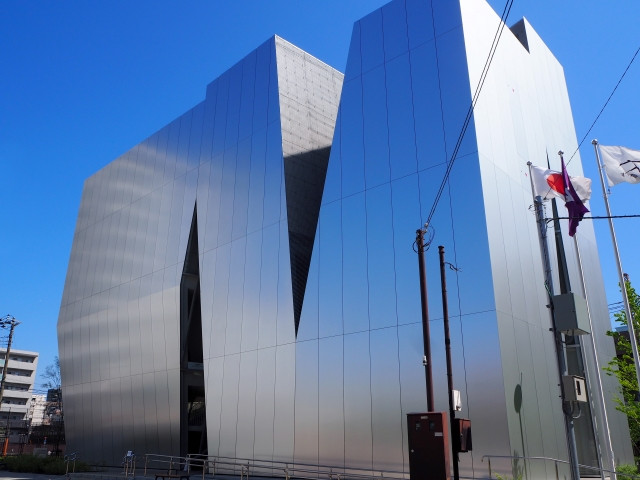
One of, if not the world’s most famous Japanese artist Katsushika Hokusai left a profound impact on the artistic landscape. You’ve all seen the painting of “The Wave” right? That’s Hokusai! And now you can visit an entire museum dedicated to him right in his hometown. The Sumida Hokusai Museum is dedicated to his works, ranging from acclaimed collections such as "Thirty-Six Views of Mount Fuji" and other work. Find both permanent and special exhibitions of his work and his impact on the art world.
See our detailed article about this museum here.
Hours: 9:30 am to 5:30 pm; closed on Mondays unless a public holiday (the following day would then be closed)
Admission: 400 yen for adults (permanent exhibition); special charge for special exhibits
※Sumida and Hokusai Museum
Experience Sumo in Ryogoku
Undoubtedly, the main attraction of Ryogoku is sumo wrestling. All year round, visitors can see sumo wrestling, eat Chanko Nabe, and buy authentic souvenirs. So get a real taste of the Japanese culture and sumo arena by visiting Ryogoku!
a. Ryogoku Kokugikan Stadium
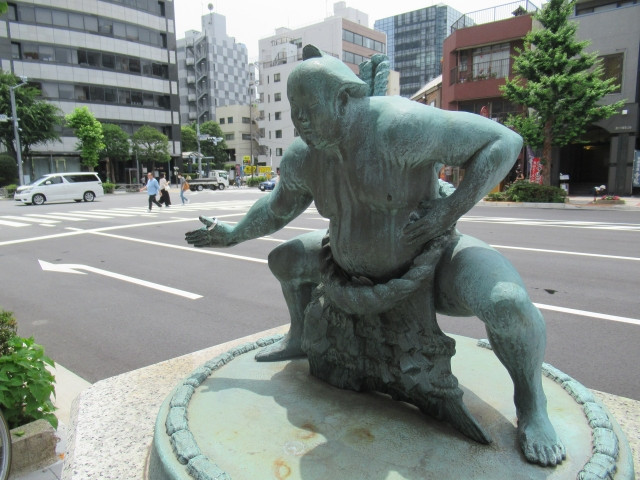
Ryogoku Kokugikan is one of the largest sumo stadiums in Japan. The stadium, built in 1985, is home to three annual tournaments and welcomes thousands of visitors each year. The major sumo events are held every year in January, May, and September. So whether you're a first-timer or a sumo aficionado, come and enjoy this traditional sport. On days when no events are scheduled, you can also take a tour of the stadium's hall. There is also a Sumo Museum inside the stadium compound, displaying the history of this sport. There are also chances to visit when the stadium hosts non-sumo related events throughout the year.
Museum Admission: Free
To buy tickets to a sumo match: Ticket Information
※Nihon Sumo Kyokai, “History”
b. Sumo Stables
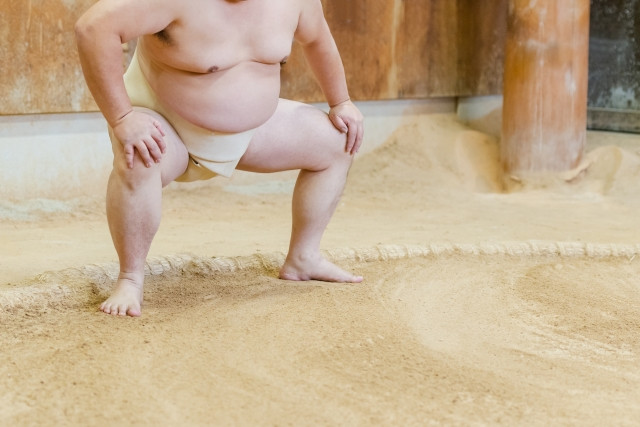
Step inside the world of sumo wrestling with a visit to a local sumo stable at Ryogoku. You can observe the sumo wrestlers in their morning practice - held quite early - if you qualify under their strict requirements for visitors. It’s best to go with someone who speaks Japanese, such as a friend or tour guide. If you are able to go, it’s an incredible experience. You can find a list of stables and which sumo wrestlers practice there on the Nihon Sumo Kyokai website.
※Nihon Sumo Kyokai, “Sumo Beya”
c. Chanko Nabe

Chanko nabe is a Japanese dish, sometimes called "sumo stew" or “sumo hotpot” which originated in the late 1800s and continues to be a mainstay today, especially for sumo wrestlers. It consists of protein-rich foods such as chicken or other types of meat, fish, tofu mixed with veggies - and anything else you want! The recipe is not fixed, and people modify it according to the calorie-need and season. Give this super high calorie dish a try if you're not concerned about putting on some weight - but then again, just once shouldn't be an issue! Some sumo wrestlers eat this every day! While you can find chanko nabe in various locations, Ryogoku is the best because you will not only potentially see sumo wrestlers eating there, but retired sumo wrestlers may also be the ones running the shop! This is a must-try food in Tokyo!
Nature and Other Attractions of Ryogoku
a. Sumida River
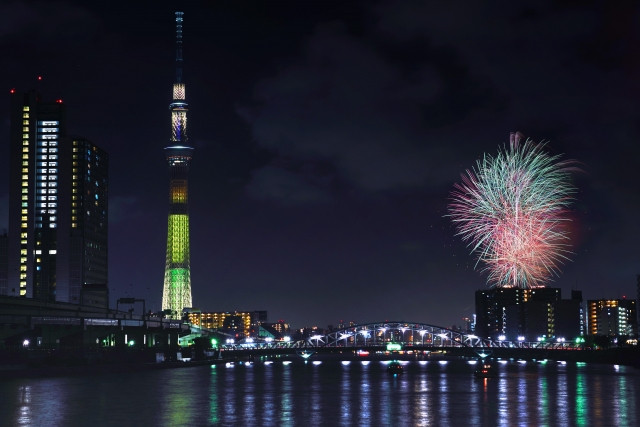
Sumida River has come to be one of Tokyo's most famous landmarks. It’s usually associated with Tokyo Skytree, Asakusa and the Sumidagawa Fireworks Festival. The festival is often listed in Japan’s best fireworks shows, and it truly is the most famous one in the nation’s capital. You can either take a long stroll along the paved banks of the river, or you could take a boat ride, either just in the area or all the way to other locations along the Sumida River and Tokyo Bay, such as Odaiba, Kasai and Asakusa.
※Sumida River
b. Kyu-Yasuda Teien Park (Formerly known as Yasuda Garden)
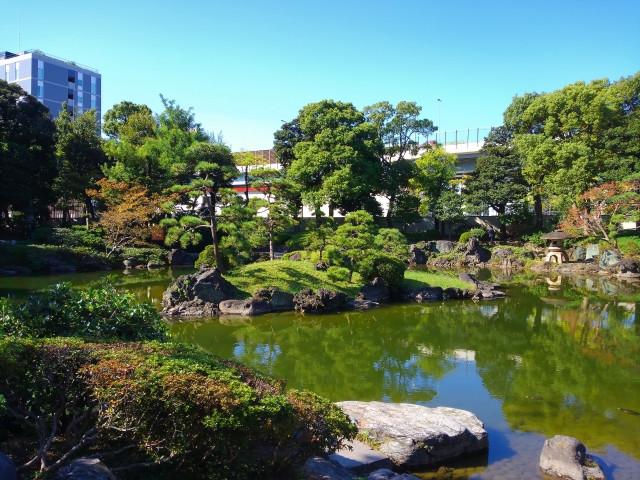
Take a break from the chaos of the city and head to the Kyu-Yasuda Teien Garden. It’s believed to be over 300 years old and has been open to the public since 1927. Although it had to be rebuilt several times due to damage by natural disasters and war, it still faithfully preserves the look of gardens from the Meiji Period. It was designated A Place of Scenic Beauty in 1996. And it’s free so definitely take a look!
Hours: 9:00 am to 4:30 pm
Admission: Free and remains
※Kyu-Yasuda Teien Garden
c. Other Notable Ryogoku Attractions
Got more time? Check out a few more places in Ryogoku!
-
Yokoamicho Park (nature and history)
-
Ryogoku Edo Noren (food)
-
Ryogoku Nigiwai Festival held in the last weekend of April(event)
Conclusion
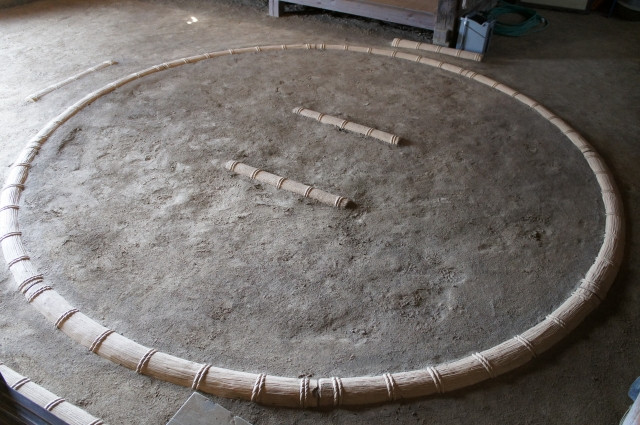
Ryogoku is a place of many treasures. Whether it be sumo, museums, nature or food, a visit to Ryogoku in Tokyo will give you an experience unlike any other in the country. Learn the charms of the history of Tokyo as it was before as you enjoy the view of the very modern Skytree in the distance.





















.jpg)











